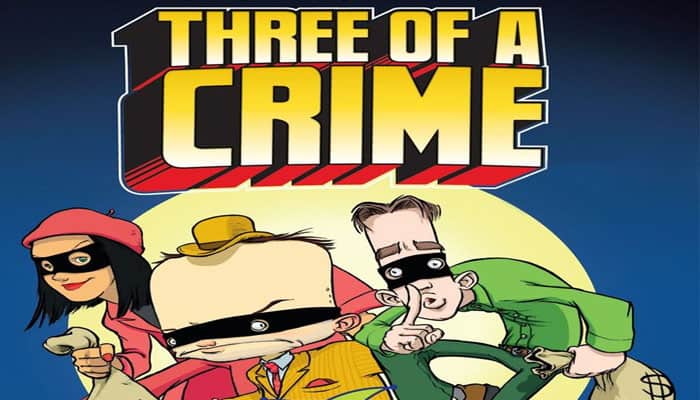

Components
- 35 suspect cards
- 20 number tokens (seven 0s, eight 1s, five 2s)
- Rulebook
Object of the Game
Use logic and deduction over the course of several rounds to figure out which three suspects are on the eyewitness's card. Be the first to name the correct suspects and claim the card. The first to collect three suspect cards wins the game.
Setup
Shuffle the suspect cards and stack them face down in the center of the playing area to form the suspect deck. Place the number tokens in the game box within reach of all players.

Game Play
A game consists of several rounds. In each round one player is the eyewitness and all other players are detectives. For the first round, the person who most recently visited a police station is the eyewitness.
The eyewitness takes the top card from the suspect deck and looks at it, making sure to keep it secret from the other players. This card determines the three guilty suspects for the round. Note that all suspects have names and colors to help differentiate them.
The detective to the left of the eyewitness begins the questioning by taking the next card from the suspect deck and placing it face-up on the playing surface within a clear view of all detectives.
The eyewitness must now indicate how many of these suspects match the suspects on her card by placing a token with the number 0, 1, or 2 on the revealed card.
She should not, however, indicate which specific suspect (if any) matches. The eyewitness should place the number token so it does not completely cover any suspect. Note: The order of suspects on the cards doesn't matter.
Example
One of the suspects on the face-up card (Kid Cassidy) matches the eyewitness's card. The eyewitness puts a 1 token on the suspect card.
Play continues to the left with the next detective drawing a suspect card and placing it face up beside the others. Each time, the eyewitness places a number token on the card to indicate how many suspects match her card.
As more and more cards are revealed the easier it will be to deduce the guilty suspects.
Accusation
At any point during the round when a detective believes he has figured out the three guilty suspects, he may make an accusation by stopping the game and saying, "Accusation!" He then points out the three suspects he believes are on the eyewitness's card.
There are two possible outcomes:
-
The eyewitness states that the accusation is correct and reveals her suspect card to end the round. The detective who made the accusation wins the card as a reward and places it face down before him.
-
The eyewitness states that the accusation is not correct. The detective who made the accusation is out for the rest of the round.
The eyewitness's suspect card remains a secret and remaining detectives continue to play until someone makes a correct accusation or until all detectives are eliminated. In the latter case, the eyewitness claims the suspect card.
Start a New Round
Shuffle the remaining cards and stack them back in the middle. The player to the left of the eyewitness becomes the new eyewitness and the game continues as above.
End of the Game
Play rounds until one player collects three suspect cards. That player is declared the master detective and wins the game. For a shorter or longer game, change the number of suspect cards needed to win before playing.
Special Rules For Two Players
Play as above but if the detective doesn't guess the correct three suspects by the sixth face up suspect card, the eyewitness wins the card and the round.
Variation For Two
Each player draws a card and simultaneously plays both detective and eyewitness. Players alternate uncovering cards and placing number tokens. (Be sure to keep each in a separate space so they don't get confused). First player to guess the correct suspects wins.
Continue Reading

